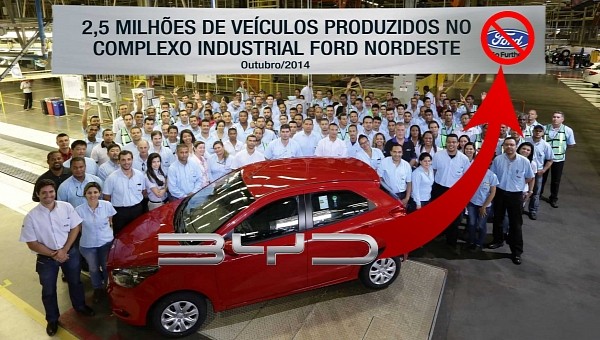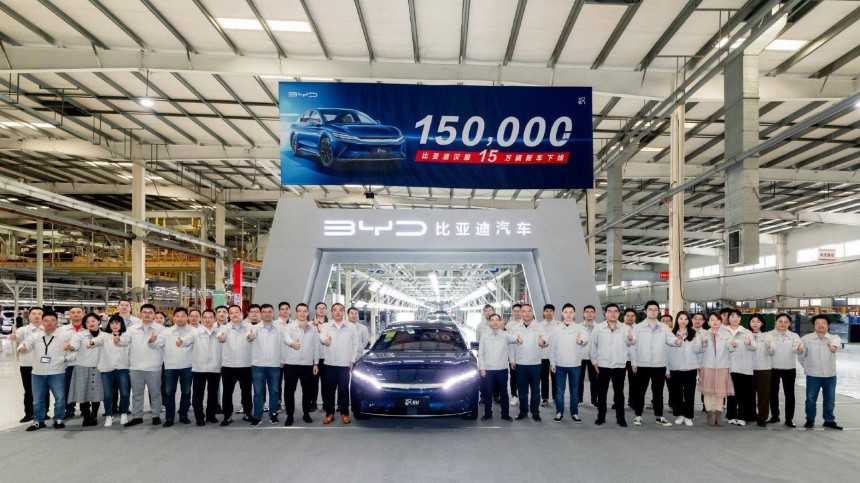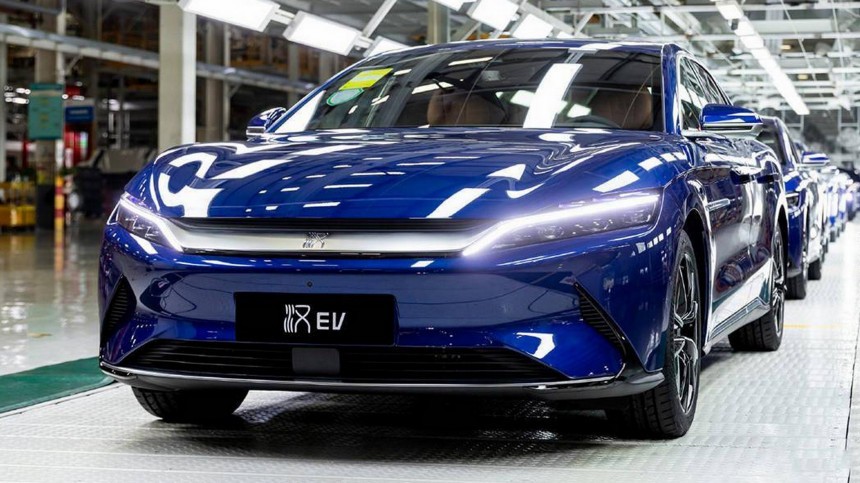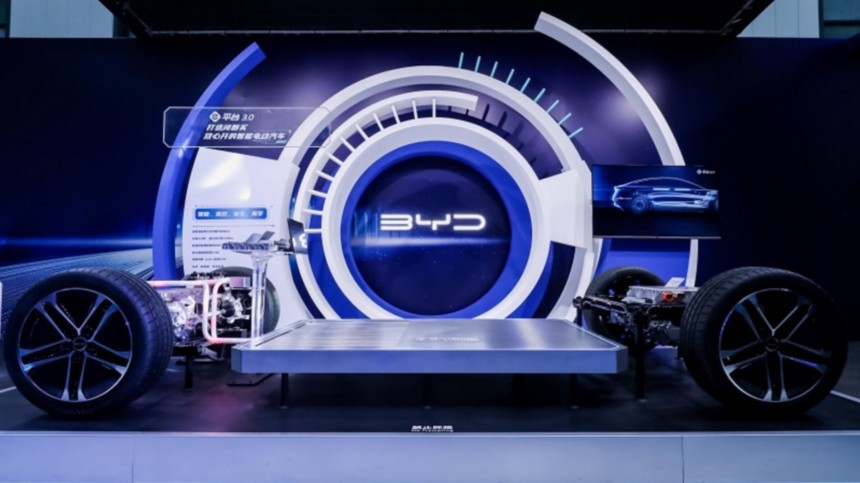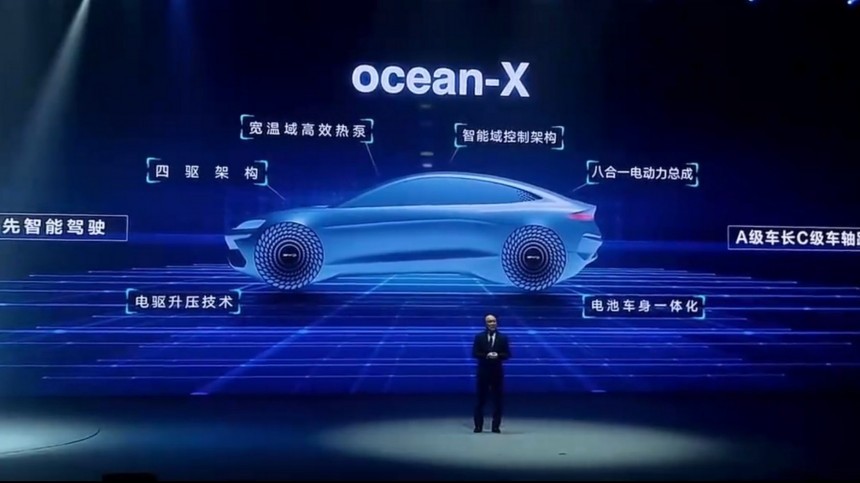The EV shift made the expression “legacy automakers” emerge. It represents all companies that established themselves with combustion engines decades ago. Newcomers do not have their own classification, possibly because Tesla fans think only their beloved EV maker challenges these older competitors. That’s far from being true. Just check BYD. If any carmaker is taking the place of others, that’s the Chinese company, especially when it comes to factories.
BYD was interested in buying two plants from Ford: one in Brazil and the other in Germany. The Brazilian unit was an industrial complex in Camaçari that used to manufacture the Ka, Ka Sedan, and EcoSport. Ford killed these three models due to its decision to focus on electric cars and more profitable products. The Saarlouis plant in Germany makes the Focus, which is still for sale but should be replaced by an electric crossover or SUV.
After the first news came out in November 2022, BYD said the deal was not set in stone at that point. Apparently, it took the company three months to decide. Jorge Moraes wrote for Uol Carros that BYD is the new owner of the Camaçari Industrial Complex, something that will be officially announced in April. A group of BYD engineers will go to the plant next week to fine-tune the role the new unit will have in the company’s strategy and define the Brazilian products.
BYD will have three plants in the Brazilian factory: one for lithium and iron phosphate processing, one for bus and truck chassis, and the last one for passenger cars, which will include EVs and PHEVs. At first, it should make 30,000 vehicles, but that can be expanded to 150,000 units. The factories will employ around 1,200 people, and the first two should start production by October 2024. The car plant is expected to kick off in January 2025.
The latest news about the Saarlous plant was that BYD would probably build its own factory in Europe instead of buying the Ford unit. In an interview with Bloomberg, BYD executive vice president Stella Li said that the company is not focusing on purchasing anything. Instead, it wants to find the best solution for its European factory. That must have to do with negotiations.
In Brazil, BYD will receive tax incentives to buy the Camaçari Industrial Complex. It may be the case that the German government is not offering the Chinese carmaker the same advantages other countries may have proposed. When it comes to establishing factories, they offer incredible political benefits for the governments (and elected officials) who manage to attract them. That’s what explains this kind of auction that happens whenever a carmaker needs to manufacture its products anywhere. The “best solution” involves logistics, market size, and, above all, reducing production costs, which also involves tax incentives.
BYD physically occupying former Ford factories is a fitting metaphor for new companies replacing “legacy automakers,” isn’t it? However, it reflects a bigger problem, one that newcomers seem to have ignored so far: overcapacity.
Traditional automakers have opened factories in the past not only to supply the demand for their cars. Most of them were also bets that these car companies could be bigger with new products. These plants were often born to make them, and they did well for a while. However, time has changed a lot of things since these factories first emerged.
These cars received several new generations until the market segment they represented ceased to be attractive. We have seen that happen with sedans, subcompact cars, and compact hatchbacks, among others. Apart from that, automakers are always trying to improve productivity, which means they can make more cars in less space. Factories that could manufacture 150,000 vehicles can now make three times as much, often in smaller areas. That made other factories obsolete. Updating them to make other cars made no sense: they were already produced elsewhere, often at lower costs.
Tesla is already facing that with the factories it opened recently. Giga Shanghai had to cut production because there is not enough demand for the vehicles in the EV maker’s current lineup. Tesla had to lower prices to improve demand, something that “legacy carmakers” classify as “buying market share.” New factories only make sense with new products, which Tesla failed to present for ages. One of the main reasons for the 2023 Tesla Investor Day to disappoint its target public was precisely a lack of new products.
BYD did not commit that mistake, and it is constantly expanding its lineup. The new factories are a way to have local production in the markets it is starting to enter with imported vehicles. With its portfolio, the Chinese automaker may select the best models for each market instead of imposing whatever it has to sell. In Brazil, BYD should produce the Song Plus DM-i in its new factory. The plug-in hybrid SUV has the right size for the Brazilian public. It will probably also be flex-fuel, as all cars that are manufactured in the country. After all, ethanol is carbon neutral and can be easily found in any fuel station.
Tesla’s new factory in Mexico could help the company enter new markets with which the country has free-trade agreements, such as Brazil. However, the EV maker’s model of direct sales (which some countries reject), Tesla Service Centers, and its own Supercharging network should postpone that indefinitely. Newcomers may become legacy automakers – with idle capacity issues – sooner than expected.
After the first news came out in November 2022, BYD said the deal was not set in stone at that point. Apparently, it took the company three months to decide. Jorge Moraes wrote for Uol Carros that BYD is the new owner of the Camaçari Industrial Complex, something that will be officially announced in April. A group of BYD engineers will go to the plant next week to fine-tune the role the new unit will have in the company’s strategy and define the Brazilian products.
BYD will have three plants in the Brazilian factory: one for lithium and iron phosphate processing, one for bus and truck chassis, and the last one for passenger cars, which will include EVs and PHEVs. At first, it should make 30,000 vehicles, but that can be expanded to 150,000 units. The factories will employ around 1,200 people, and the first two should start production by October 2024. The car plant is expected to kick off in January 2025.
In Brazil, BYD will receive tax incentives to buy the Camaçari Industrial Complex. It may be the case that the German government is not offering the Chinese carmaker the same advantages other countries may have proposed. When it comes to establishing factories, they offer incredible political benefits for the governments (and elected officials) who manage to attract them. That’s what explains this kind of auction that happens whenever a carmaker needs to manufacture its products anywhere. The “best solution” involves logistics, market size, and, above all, reducing production costs, which also involves tax incentives.
Traditional automakers have opened factories in the past not only to supply the demand for their cars. Most of them were also bets that these car companies could be bigger with new products. These plants were often born to make them, and they did well for a while. However, time has changed a lot of things since these factories first emerged.
Tesla is already facing that with the factories it opened recently. Giga Shanghai had to cut production because there is not enough demand for the vehicles in the EV maker’s current lineup. Tesla had to lower prices to improve demand, something that “legacy carmakers” classify as “buying market share.” New factories only make sense with new products, which Tesla failed to present for ages. One of the main reasons for the 2023 Tesla Investor Day to disappoint its target public was precisely a lack of new products.
Tesla’s new factory in Mexico could help the company enter new markets with which the country has free-trade agreements, such as Brazil. However, the EV maker’s model of direct sales (which some countries reject), Tesla Service Centers, and its own Supercharging network should postpone that indefinitely. Newcomers may become legacy automakers – with idle capacity issues – sooner than expected.
